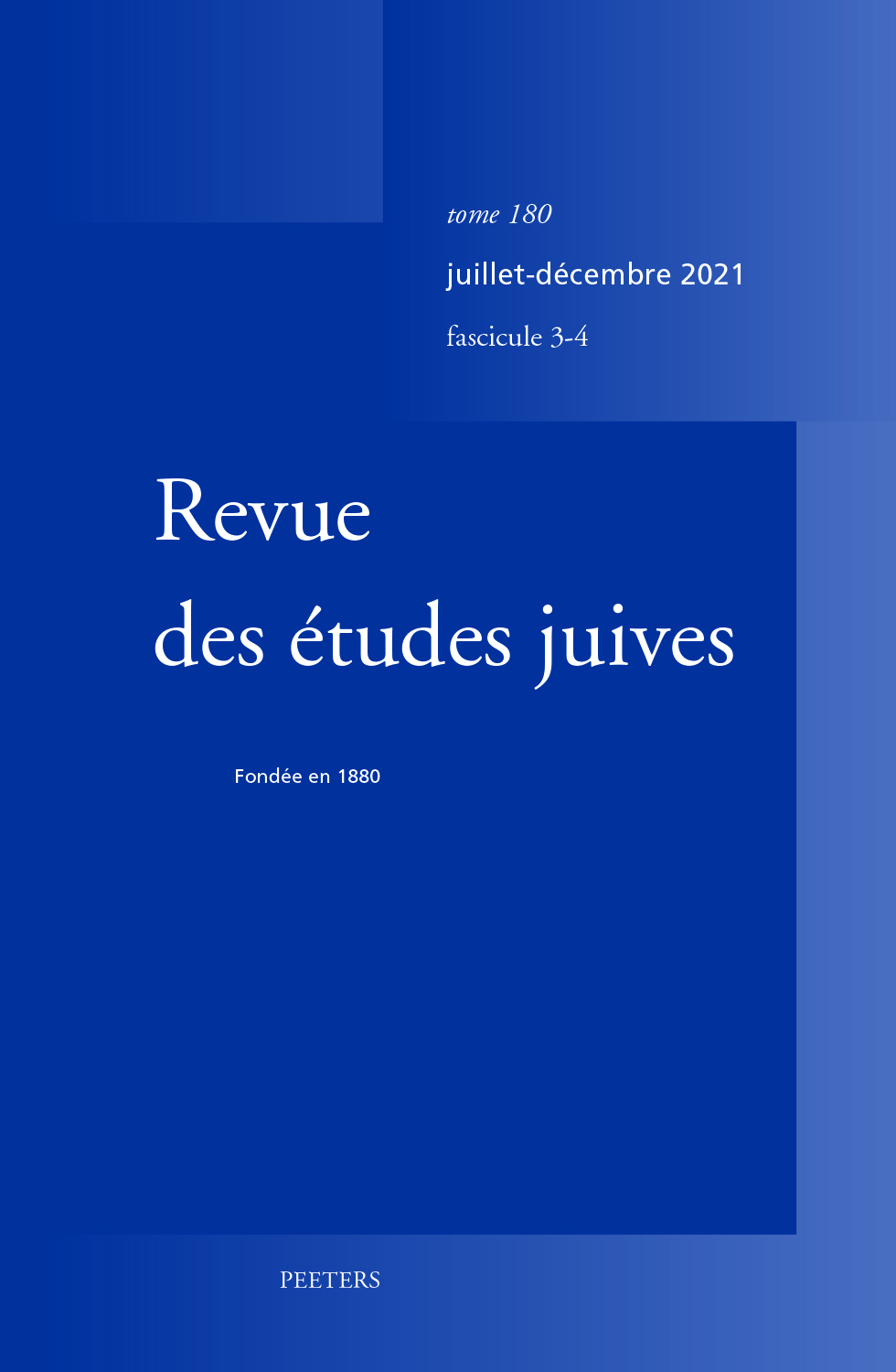 previous article in this issue previous article in this issue | next article in this issue  |

Preview first page |
Document Details : Title: Creating a Popular Culture Subtitle: The Linguistic Model in the Hebrew Folksong Author(s): RESHEF, Y. Journal: Revue des Études Juives Volume: 163 Issue: 1-2 Date: 20004 Pages: 46-69 DOI: 10.2143/REJ.163.1.504715 Abstract : Un examen de la langue utilisée dans le chant folklorique hébraïque révèle que les choix linguistiques ayant contribué à sa spécificité se sont faits selon un modèle linguistique structuré. Ce modèle a favorisé l’emprunt d'éléments traditionnels — en particulier ceux qui étaient dérivés de l’hébreu biblique — et entravé simultané- ment l’emploi de traits linguistiques susceptibles de refléter les changements ayant accompagné la transformation de l’hébreu en un moyen de communication quotidien, en particulier dans sa dimension parlée. Par voie de conséquence, le chant folklorique fut caractérisé par un style relativement soutenu et un conservatisme linguistique. Ce modèle linguistique a opéré à tous les niveaux, garantissant ainsi la cohérence stylistique de ce mode d’expression. Ces caractéristiques du chant folklorique sont étudiées à travers une sélection de phénomènes fondée sur l’examen d’un large corpus. Ce corpus, qui représente la couche canonique du chant folklorique hébreu, créé avant la fondation de l'État d'Israël, consiste en chansons écrites, dans le cadre des efforts de construction nationale du Mouvement national juif. L’étude met en lumière le type de choix linguistiques qui ont forgé cette composante essentielle de la culture populaire, créée dans le Yishuv de langue hébraïque. An examination of language use in the Hebrew folksong revealed that the linguistic choices which shaped its character followed a structured linguistic model. This model encouraged the adherence to inherited usages, primarily those derived from biblical Hebrew, and hindered the employment of linguistic features that reflected the changes that accompanied the transformation of Hebrew into a daily means of communication and were identified with the contemporary language — and primarily with its spoken dimension. Consequently, the folksong was linguistically conservative, and was characterized by a relatively elevated style. This stylistic model operated in the folksong in all linguistic levels, granting it stylistic uniformity. These characteristics of the folksong are discussed and demonstrated by selected phenomena, based on an examination of a large textual corpus. The corpus, which represents the pre-State canonic layer of the Hebrew folksong, consists of songs that were created as part of the nation-building efforts of the Jewish National Movement in the period preceding the establishment of the State of Israel. The discussion highlights the kind of linguistic choices that shaped the unique character of this central component of the popular culture created in the Hebrew-speaking Yishuv in its formative period. |
|


